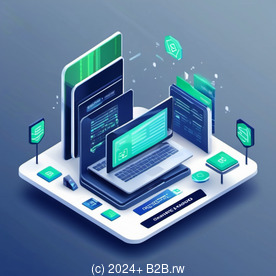
Understanding Payment Reconciliation Tools




General Overview of Payment Reconciliation Tools
Payment reconciliation tools are vital systems that help businesses ensure that financial transactions recorded in their accounting systems align precisely with those processed by external payment gateways and processors, such as Amazon Pay. In essence, reconciliation involves verifying that the amounts received correspond with the amounts recorded in the company's financial accounts. This is a critical part of maintaining financial accuracy, as even minor discrepancies can lead to significant financial mismanagement over time.
In the rapidly evolving world of e-commerce, where transactions can occur around the clock, the potential for errors and mismatches increases substantially. Payment reconciliation tools act as a safeguard against these risks by providing automated mechanisms to identify, monitor, and resolve discrepancies. They facilitate a structured approach in tracking daily sales, refunds, chargebacks, and various payment methods, creating a transparent view of all transactions.
By effectively implementing reconciliation tools, businesses can improve their cash flow management, as they acquire real-time visibility over financial transactions. This is particularly important for companies that experience seasonal spikes in sales, allowing them to adjust strategies swiftly and maintain a healthy financial position. Furthermore, the reduction in manual reconciliation work frees finance teams to engage in strategic analysis, ensuring that the organization concentrates on growth initiatives rather than merely error correction.




Noteworthy Considerations Across Perspectives
To fully grasp the significance and multifaceted nature of payment reconciliation tools, one must analyze them through various perspectives. Each viewpoint reveals crucial insights that contribute to a broader understanding of how such tools affect operational efficiency and business relationships.
**Economic Perspective**: From an economic standpoint, payment reconciliation tools yield considerable benefits by minimizing losses that arise from financial discrepancies. Their systematic approach to transaction verification ensures that all revenue is recorded correctly, helping avoid situations where businesses underreport income or encounter unwarranted tax liabilities. Moreover, by curtailing potential fraudulent transactions through extensive monitoring, businesses safeguard themselves against unexpected losses, thus fortifying their economic stability. **Political Perspective**: The role of governance in financial systems cannot be overlooked. Payment reconciliation tools enhance adherence to government policies and regulations, ensuring that businesses comply with financial reporting standards set forth by regulatory bodies. This compliance is crucial, especially for multinational corporations, as different countries have varying rules regarding financial practices. Committing to stringent reconciliation practices bolsters a companys reputation, presenting it as a trustworthy and responsible entity in the global market. **Social and Demographic Factors**: Understanding social trends, such as the increasing demand for hassle-free digital payment options, can greatly influence how payment reconciliation tools are developed and utilized. As consumer preferences continue to evolve, businesses must adapt their reconciliation tools to accommodate diverse transaction methods, including credit cards, digital wallets, and alternative payment solutions. By aligning their processes with customer behaviors, organizations can enhance user experience and satisfaction, thus fostering long-lasting relationships with their customer base. **Environmental Perspective**: As environmental responsibility becomes increasingly prioritized, many businesses are embracing digital solutions that reduce paper dependency. Payment reconciliation tools that facilitate electronic record-keeping not only conserve resources and reduce waste but also reflect the organizations commitment to sustainability. Additionally, these eco-friendly practices resonate well with consumers who are more inclined to support businesses that demonstrate environmental consciousness, further enhancing brand loyalty. **Legal Analysis**: Legal compliance plays a pivotal role in any financial system, particularly regarding data protection and privacy regulations, like the General Data Protection Regulation (GDPR) in the EU. Payment reconciliation tools ensure businesses handle consumer data securely during reconciliation processes, thus adhering to strict legal standards. By implementing these tools, organizations can protect themselves from governmental scrutiny and hefty fines resulting from compliance failures, reinforcing the necessity of safeguarding both financial and personal data. **Historical Context**: Traditionally, the reconciliation process was labor-intensive, requiring extensive manual entry and reconciliation by finance teams, which often resulted in inaccurate records and susceptibility to fraud. The evolution of payment reconciliation tools, powered by automation and advanced algorithms, has transformed this landscape significantly. By leveraging these tools, businesses can reduce errors, enhance efficiency, and focus on strategic planning rather than revisiting historical inaccuracies. **Technological Impact**: The rapid advancement of technology has revolutionized payment reconciliation procedures. Innovations in artificial intelligence (AI) and machine learning allow tools to analyze vast amounts of transaction data swiftly, identifying patterns and anomalies that could indicate discrepancies or potential fraud. With these technologies, reconciliation tools become proactive rather than reactive, allowing businesses to address issues before they escalate. By staying ahead of financial challenges, organizations can enhance decision-making processes and maintain robust financial health. **Psychological Factors**: The psychological effects of maintaining accurate financial records should not be underestimated. Confidence in an organizations financial management fosters positive relationships between businesses and their stakeholders, including employees, customers, and investors. When payment reconciliation tools produce reliable reports, they contribute to a sense of stability and trustworthiness, which is vital for long-term success. Consumers are more likely to engage with businesses they perceive as financially sound and transparent. **Business Perspective**: From a strategic viewpoint, organizations that invest in payment reconciliation tools tend to project an image of professionalism and commitment to operational excellence. By demonstrating a robust financial management framework, these businesses can not only enhance their industry standing but also gain competitive advantages. Accurate financial reporting strengthens investor confidence, improves credit terms, and can lower borrowing costs, enabling businesses to reinvest savings into growth and innovation initiatives.




The Core Topic: Payment Reconciliation Tools
Payment reconciliation tools are not just functional assets; they play a transformational role in how businesses manage their financial transactions. For organizations relying on payment processors like Amazon Pay, reconciling transaction discrepancies can present substantial challenges. These discrepancies might stem from various sources, including chargebacks, returned payments, human error, or system glitches. If left unaddressed, these issues can accumulate, leading to significant revenue losses and reputational damage.
Payment reconciliation tools offer numerous critical advantages that empower businesses to overcome these risks:
- Automated Processes: Automation is a hallmark feature of modern payment reconciliation tools. By automating reconciliation workflows, businesses can reduce the time spent on manual entry and error detection. This not only streamlines processes but also enables finance teams to concentrate on analysis and strategy rather than getting bogged down by repetitive tasks.
- Real-time Monitoring: The ability to monitor transactions in real time empowers businesses to respond to discrepancies swiftly. This immediacy is essential in keeping cash flow intact and making informed decisions regarding financial operations. Moreover, real-time insights help organizations anticipate potential cash flow challenges, allowing for preemptive action.
- Data Insights: Payment reconciliation tools accumulate and analyze transaction data, offering valuable insights concerning sales patterns, revenue streams, and customer behaviors. Organizations leveraging these insights can refine their strategies, optimize pricing, and even tailor marketing efforts to maximize returns.
- Cost Efficiency: By preventing discrepancies and erroneous reports, payment reconciliation tools enable organizations to avoid costly corrections and penalties. This cost efficiency ultimately contributes positively to the bottom line, allowing funds to be redirected toward growth initiatives and innovation.
- Enhanced Customer Trust: Accurate financial oversight fosters consumer trust. When businesses maintain precise records of transactions and respond efficiently to discrepancies, it shows a commitment to transparency and reliability. This builds long-term loyalty among customers, which is critical in an era where consumer choice is vast.
A robust payment reconciliation tool should integrate seamlessly with existing business software, including accounting solutions and enterprise resource planning (ERP) systems. For example, reconciliation tools that are compatible with popular accounting platforms like QuickBooks or Xero can significantly enhance operational efficiency, allowing businesses to automate data transfers and reduce the potential for errors. Integration capabilities are vital, as they ensure that reconciliation processes fit smoothly into the overall financial management ecosystem of the organization.
Furthermore, customization options allow businesses to tailor reconciliation reports to their specific needs. Smaller businesses may require straightforward interfaces, while larger corporations may benefit from advanced features capable of analyzing vast amounts of data. Such flexibility ensures that all users, regardless of their company size, can derive value from their chosen tools.
Looking toward the future, the integration of blockchain technology into payment reconciliation tools presents further transformative potential. Blockchain's decentralized and immutable properties can lead to unprecedented accuracy and security in transaction processing. This could remove the need for intermediaries, which often create bottlenecks and discrepancies, while providing all stakeholders with transparent access to the transaction history. The adoption of blockchain technology could redefine how payment reconciliation occurs, streamlining processes and enhancing trust across the board.




Conclusion: Embracing Payment Reconciliation Tools for Success
As e-commerce continues to expand and diversify, the need for efficient payment reconciliation tools becomes increasingly apparent. These tools provide businesses with the infrastructure to tackle operational challenges related to managing transactions and discrepancies while aligning with broader economic, political, and social expectations. Payment reconciliation tools are not just an expense; they are essential assets that promote financial integrity and clarity, ultimately enabling organizations to thrive in ever-competitive markets.
Interested in knowing more? Feel free to reach out to us at www.b2b.rw through email, phone, or our online contact form. If youre considering enhancing your financial management system with our advanced payment reconciliation tools, the investment is $899. Please proceed to our Checkout Gateway to finalize your purchase in a seamless manner. After the payment is processed, dont hesitate to contact us with your payment receipt and relevant details to arrange your Payment Reconciliation Tools service. Thank you for considering our solutions to support your business needs!
Optimize Your Financial Management Today
Dont leave your revenue at risk due to unresolved discrepancies. Invest in our state-of-the-art payment reconciliation tools for just $899. Streamline your e-commerce operations and ensure flawless financial records now! Visit our Checkout Gateway to secure your purchase and empower your business today!
